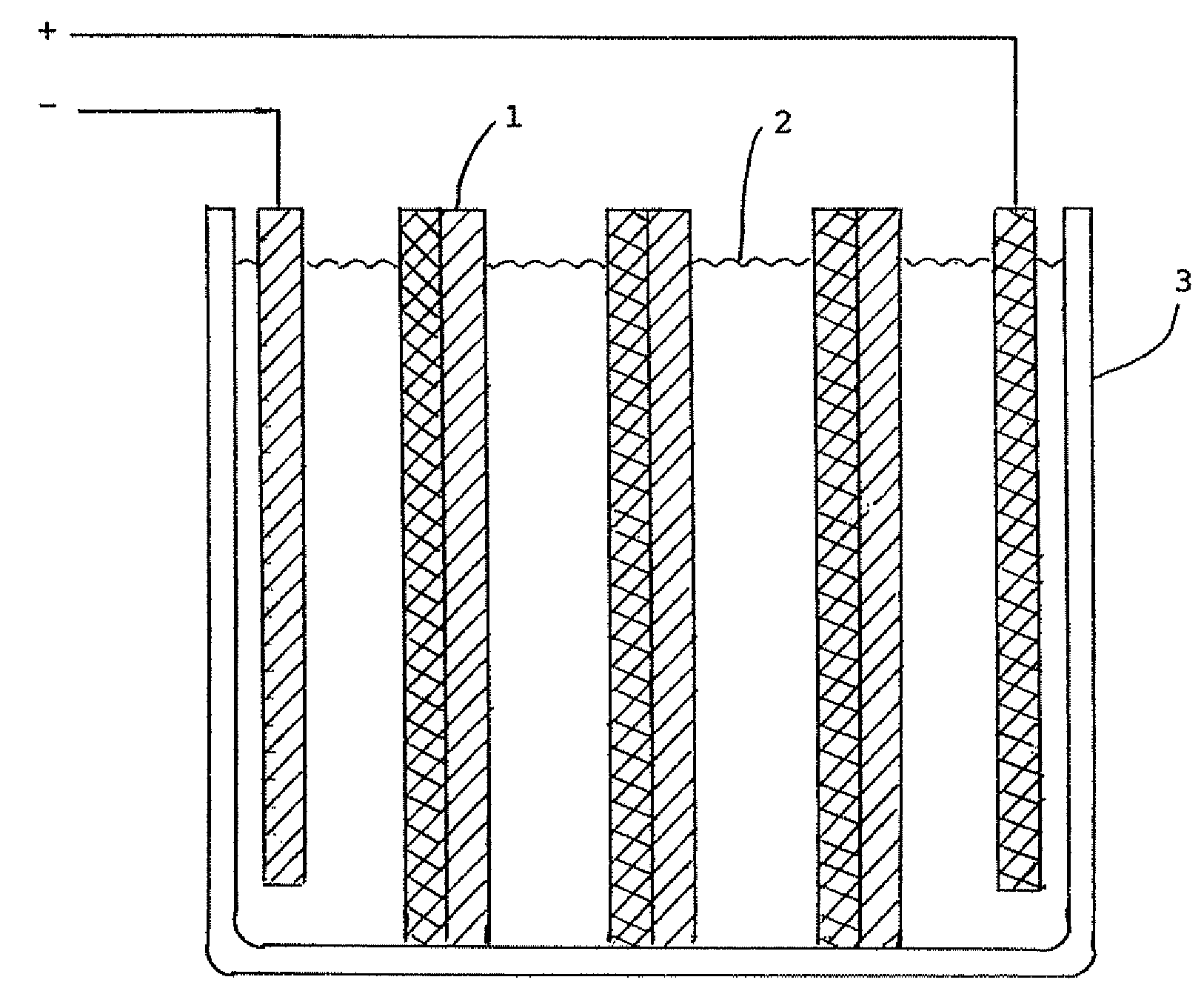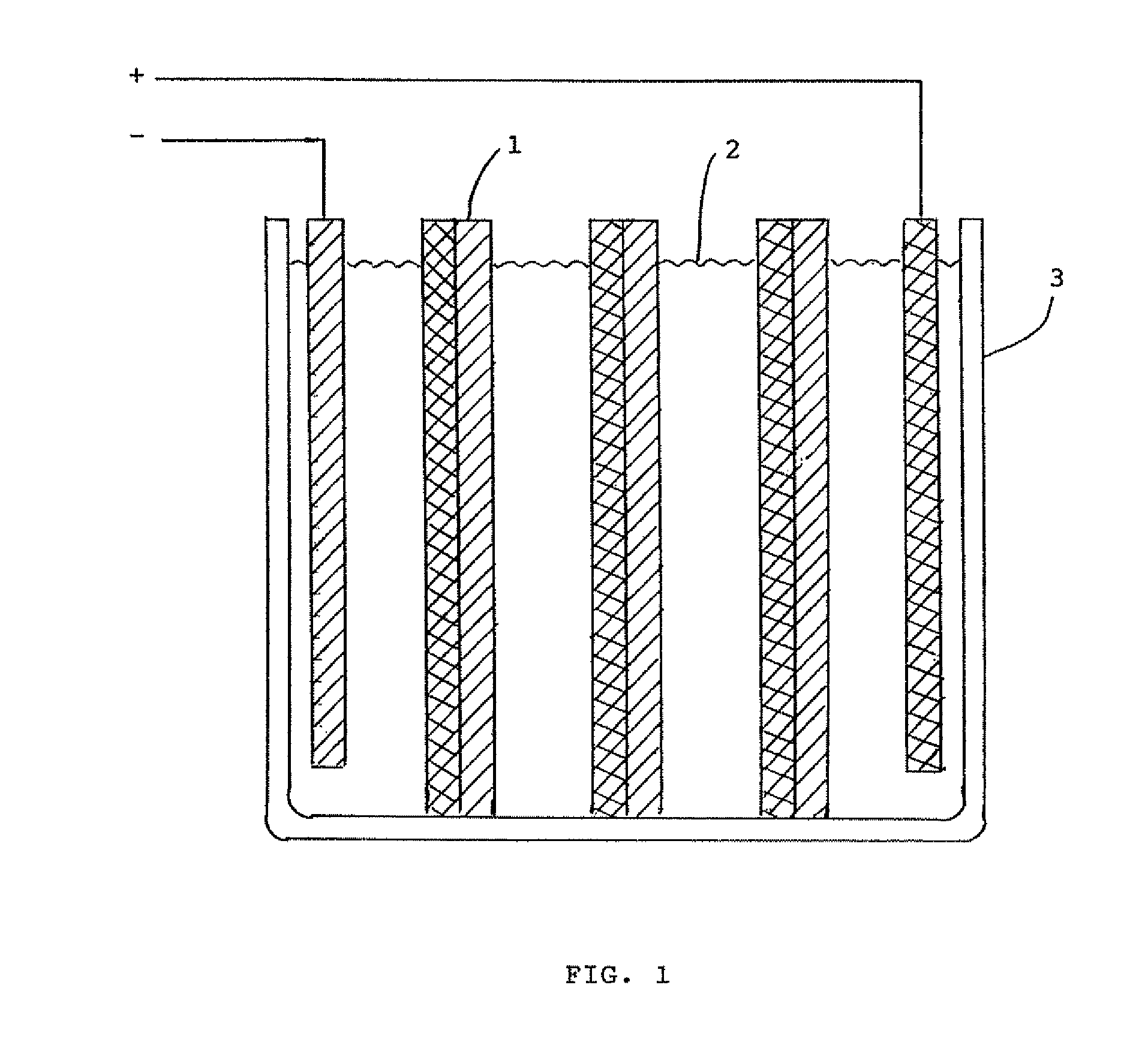Tin-zinc secondary battery
a secondary battery and zinc-zinc technology, applied in cell components, alkaline accumulator electrodes, electrochemical generators, etc., can solve the problems of limited application where mobility is needed, lead toxicity is a drawback, etc., and achieve the effect of maximum versatility
- Summary
- Abstract
- Description
- Claims
- Application Information
AI Technical Summary
Benefits of technology
Problems solved by technology
Method used
Image
Examples
example 1
[0016]The experimental cell comprised a glass jar 1¾ in. diameter by 3½ in. high. The positive electrode consisted of a tin ingot 99.8% tin on metal basis, 1 in. wide by 0.37 in. thick. The negative electrode was fashioned from a sheet of zinc 1½ in. wide, removed from a size D dry cell of the Leclanché type. A spacer was cut from polypropylene sheet and inserted between the electrodes. The electrolyte was a household brand of ammonia solution. After charging the cell for 23 minutes at 4.5 v., an open circuit potential of 2.05 v. was observed for the cell. On discharge, the cell produced a current of 10 milliamps. At the conclusion of the run, both electrodes were bright and untarnished. The electrolyte was water white.
example 2
[0017]The same cell as the one in example 1 was used except a new electrolyte was employed. To prepare the electrolyte 87.9 g. of potassium bicarbonate was heated at 500° F. in an oven to convert it to potassium carbonate, which was dissolved in 150 ml. water. After charging the cell for 7 minutes at 3 v., an open circuit voltage of 2.1 v. was obtained. The cell produced a current of 80 milliamps and lit a light bulb. At the end of the run, the tin electrode had changed from silvery to a shiny dark brown, almost black, color. The zinc electrode had a smooth grey surface. The electrolyte was water white.
example 3
[0018]In this experiment, an electrolyte of sodium borate solution was used. To prepare the electrolyte, 35.0 g. of boric acid and 21.9 g. of sodium hydroxide were added to 125 ml. water. The same electrodes and container were used as in example 1. After charging the cell for 8 minutes at 3.5 v., an open circuit voltage of 2.15 v. was observed. Upon discharge, a current of 70 milliamps was obtained causing the light bulb to flicker. When the run was completed, the tin electrode had turned from silvery to a shiny brown color. The zinc electrode remained gray and in perfect condition. The electrolyte was water white.
PUM
| Property | Measurement | Unit |
|---|---|---|
| energy density | aaaaa | aaaaa |
| alkalinity | aaaaa | aaaaa |
| single electrode potentials | aaaaa | aaaaa |
Abstract
Description
Claims
Application Information
 Login to View More
Login to View More - R&D
- Intellectual Property
- Life Sciences
- Materials
- Tech Scout
- Unparalleled Data Quality
- Higher Quality Content
- 60% Fewer Hallucinations
Browse by: Latest US Patents, China's latest patents, Technical Efficacy Thesaurus, Application Domain, Technology Topic, Popular Technical Reports.
© 2025 PatSnap. All rights reserved.Legal|Privacy policy|Modern Slavery Act Transparency Statement|Sitemap|About US| Contact US: help@patsnap.com


